Psychiatric art in Spain, 1917-1990
|
Psychiatric art in Spain,
1917-1990
From 22 October 2009 to 24 January 2010
Estudi General
Room – La Nau
From
Tuesday to Saturday, from 10 to 13.30 and from 16 to 20 h.
Sunday, from 10 to 14 h.
|
|
Nota de prensa [+] |
| |
|
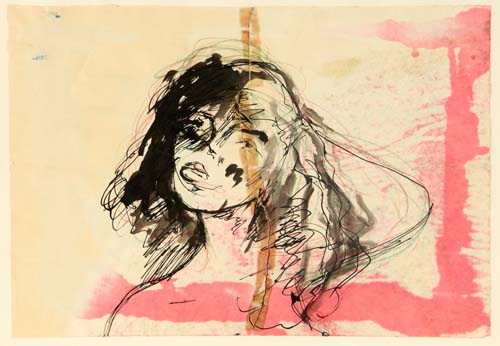 |
|
|
|
Project and organisation by Universitat de València
Also sponsored by SECC, Sociedad Estatal de
Conmemoraciones Culturales, Caja Madrid, Ayuntamiento de
Elche and DKV Seguros.
Curator: Dr. Ana Hernández Merino
Scientific justification and proposal
Since the
beginning of the 20th century, paintings of
the mentally ill in Spain have been for psychiatry an
instrument supporting diagnosis, an occupational
activity or a way of psychotherapy, largely in line with
the theses of the Italian forensic doctor Lombroso
(1909) and those of Herman Simon (1928), contributions
from Hans Prinzhorn (1922) and the collection of
Heidelberg Hospital.
The
emergence of the European avant-garde extended the
influence of psychiatric painting beyond the walls of
madhouses. Insane individuals could be artists and so
they could show their works not only as a reflection of
their morbid processes but also as works of art able to
move others from the originality of shapes and contents.
Their art evidenced the subtle boundaries between the
creations of healthy or sick artists, becoming a
cultural fact that overcame the commonly pejorative
labels imposed by psychiatric diagnoses. |
|
|
|
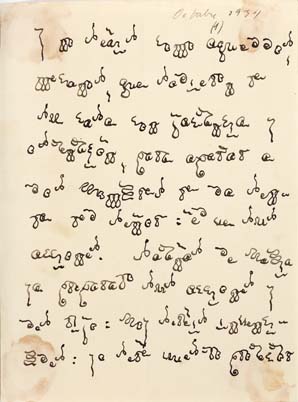 |
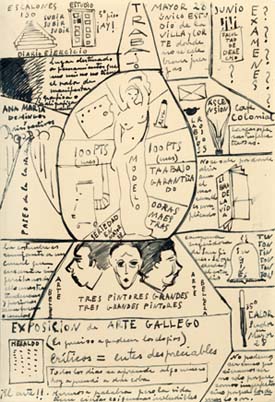 |
|
|
|
In Spain we have seen marginal painting exhibitions like
"Parallel Visions" in the Reina Sofia Museum of Madrid,
in 1992. The exhibition showed the confluence of
perspectives between artists who had done most of their
work confined in an institution and avant-garde artists.
Many of these works came from the Art Brut Museum of
Lausanne. The thesis of the show encouraged a gaze
exchange that went beyond formal influences and raised
among visitors and researchers multiple questions about
art, madness, avant-garde movements, psychiatry or
simply anguish, pain and psychic suffering, transcending
from the beauty of the works exhibited. In 2001, we also
saw in Barcelona’s MACBA a show on the Prinzhorn
collection, from the psychiatric clinic of Heidelberg.
In both exhibitions, the Madrid and Barcelona one, the
origin of the works was England, France, Germany or
Austria, but there were no paintings by artists from our
country. The debate did not take into consideration
either the role of psychiatric painting in Spain. These
facts could actually cause us to draw the conclusion
that no such experience took place in Spain and that in
psychiatric hospitals in our country patients did not
paint, or that there were no painting collections, but
this was not the case. Indeed, paintings were collected
although it was not a priority concern for
psychiatrists. Works were collected out of an artistic
interest and analysed for psychopathological reasons.
Specific museums were set up but they disappeared during
the civil war, such as the of the Institute Pere Mata of
Reus; and exhibitions were held in 1935 at the Ateneo de
Madrid, or in the 4th World Psychotherapy
Congress organised by the Teaching Hospital of Barcelona
in 1858, where art therapy was discussed for the first
time, or at the Casón del Buen Retiro in Madrid in 1966
on the occasion of the 4th World Conference
on Psychiatry, with more than 700 artworks exhibited.
These exhibitions were always organised, on an exclusive
basis, within the field of psychiatry and for
psychiatric professionals. |
|
|
|
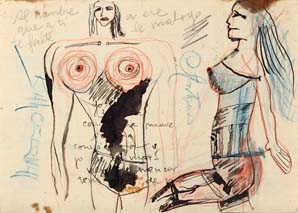 |
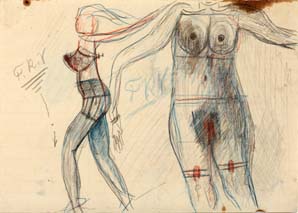 |
|
|
|
This exhibition aims to show, from today’s perspective,
relevant psychiatric paintings from the 20th
century in Spain, with works that have been borrowed –
for the purpose of this exhibition project - from
several Spanish hospitals and different private
collections.
Presenting more than three hundred works and original
documents, the exhibition is divided into 8 thematic
sections:
1: Primitivism
2: Identifying insanity, the head as an allegory
3: Passions
4: Angels and demons
5: Machines and other inventions
6: The all-seeing eye
7: Melancholy
8: the sinister and the monstrous |
|
|
|
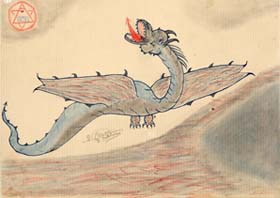 |
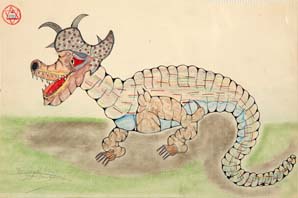 |
|
|
|
Works and documents borrowed from (institutions and
private collectors):
Collection, Dr. Joan Obiols (Barcelona)
Collection, Dr. Gonzalo R. Lafora (Madrid)
Collection, Piguem (Lleida)
Collection, Pérez Villamil (Vigo)
Collection Asociación de Artístas Plásticos Línea Paralela, Sevilla
Fundación Andaluza para la Integración Social del
Enfermo Mental (Faisem), Sevilla
Collection, Dr. Sarró (Barcelona)
Colección Orden Hospitalaria de San Juan de Dios, Ciempozuelos
(Madrid)
Hospital Psiquiátrico de Cabaleiro Goas (TOEN), (Ourense)
Hospital Psiquiátrico de Conxo (Santiago de Compostela)
Museo de Historia de la Medicina y la Ciencia,
Universitat de València
Diputación de Valencia |
|
|
|
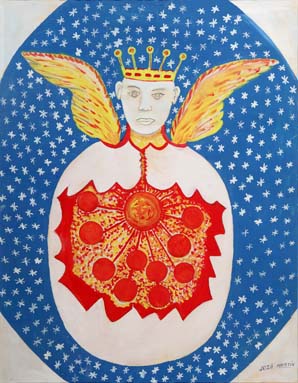 |
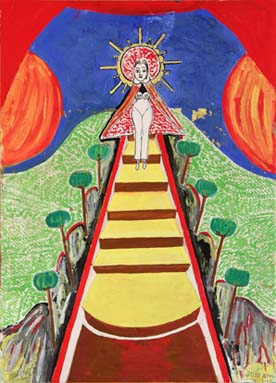 |
|
|
|
 |
|
|
|
 |
|
|
|
 |
|
|
|
|